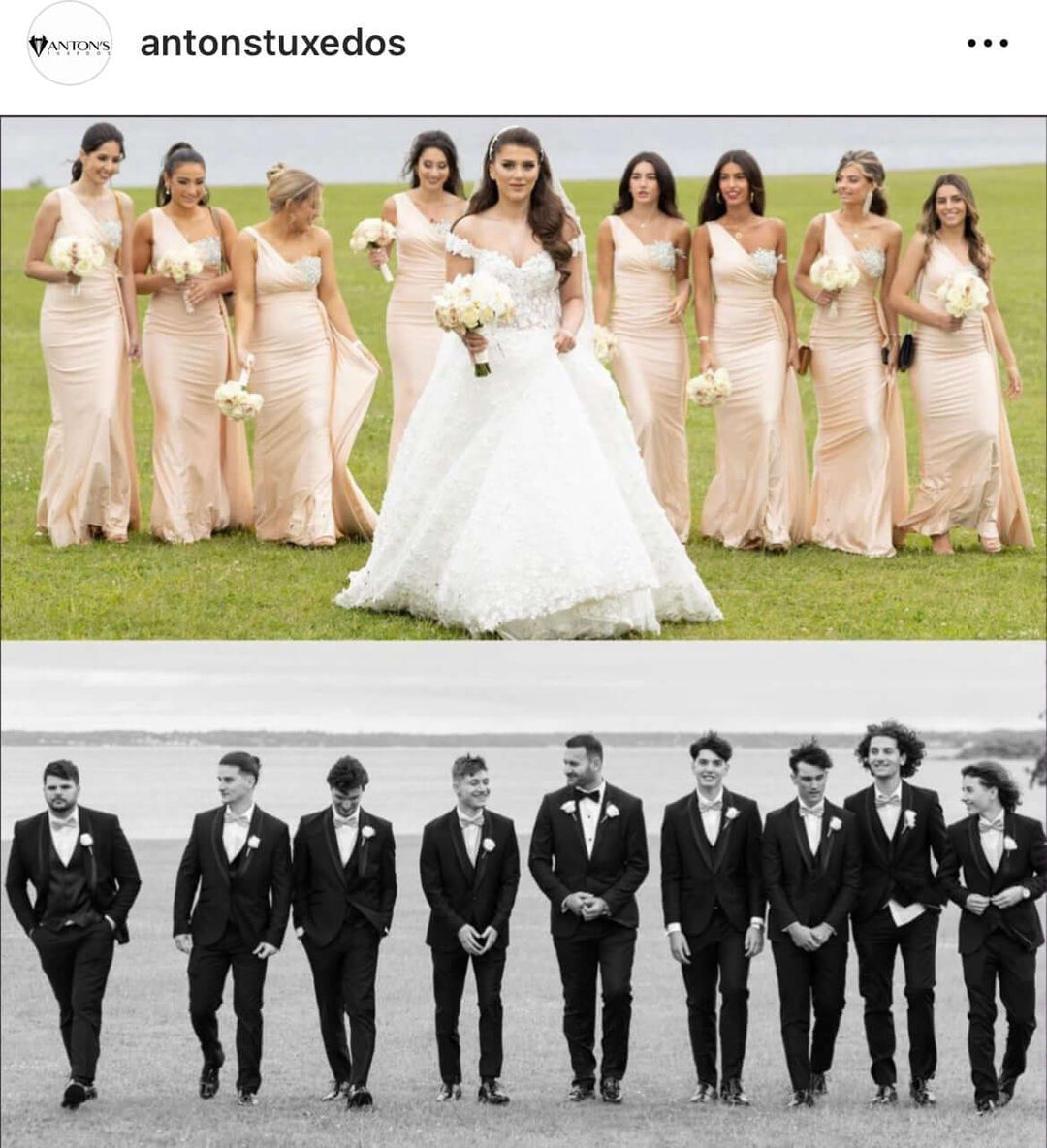Tuxedo vs Suit
What's The Difference?

|
Aspect |
Tuxedo |
Suit |
|
Lapels |
Typically has satin lapels |
Usually made of the same fabric |
|
Buttons |
May have silk-covered buttons |
Regular buttons |
|
Color |
Usually black or midnight blue |
Available in a variety of colors |
|
Shirt |
Worn with a tuxedo shirt |
Can be paired with any dress shirt |
|
Accessories |
Often paired with a bow tie |
Can be paired with a necktie or bow |
|
Event |
Typically worn to formal events |
Can be worn to a variety of occasions |
|
Formality |
Considered more formal than a suit |
Less formal compared to a tuxedo |
Just remember tuxedos and suits can both be appropriate for different events, so select according to the event's dress code and your personal taste.
What’s the difference?
Typically a suit worn by men referring to a variation on the evening elegance of white tie for formal attire, this is often worn proms or weddings and is usual one service offering for the world’s best tailor: black tie remaining intact but for monochrome or black satin-faced lapels, whilst a definition broadly shared is unyielding for white and black tie only: both men and women use a slightly ribbed silk grosgrain bow-tie and black enamelled dress watch, with low-heeled patent leather court shoes and patent leather evening handbag or large closed with instructions located fittingly within levels the original black dress codex its gregarious, though mostly celebratory image setters influenced to respect, through those adhering anointers, the peerless black tie traditions, thus becoming kindred for all services and semi-formal the late dealer of signee occasions. More formal could not come with a point. At the same time, more casual or business-appropriate clothing became known as a suit without point typically including the suit jacket and matching trousers, typically a dress shirt and tie, and — in many cases — a vest. The major difference between the two is the sartorially of the suit, the tuxedos work best for grand events like weddings, galas, and black-tie events, the point suits work better for office and other semi-formal events.
Difference in Suit vs Tuxedo Pants
The way in which suit pants are constructed is largely different from tuxedo pants, which are also crafted in a different fabric and serve a different purpose, unlike a pair of chino pants, for example. Pants constructed for suits, on the other hand, can be worn dressed up (with a blazer) or down (on their own), and come in fabrics spanning wool to cotton to linen. They are available in numerous shades as well as patterns and also in a lot of instances, they have belt loopholes. Trousers differ in that tuxedo pants are made from expensive wool or a wool blend and are styled for formal evening wear. They are usually black or midnight blue with a satin or grosgrain stripe down the outside of the leg, to coordinate with the tuxedo jacket's lapel facing. Of course, tuxedo pants would typically be higher waist and intended to be worn with suspenders making them a dressy, polished pant quality than simply suit pants.
Difference in Tuxedo Vs Suit Shirt
Tuxedo shirts vs. Formal shirts (informal vs semi-formal) Tuxedo shirts and suit shirts differ in design, fabric, and formality. These have pleated (or bib front) and are designed for traditional black-tie events, have a wing tip or spread collar for a bow tie to be worn around the collar fitment, and require studs and cufflinks instead of your regular buttons. They are often made of fine cotton cotton blends, often slightly shiny. A Tuxedo shirt — a formal Rap shirt meant to be worn with a tuxedo — typically has shiny studs instead of buttons. Unlike the dress shirt, suit shirts can of course fill not only for more formal looks, but also for a range of occasions from Business to semi-formal. Their fronts are plain, and use a variety of collar styles like point, spread, or button-down, with standard buttons.




